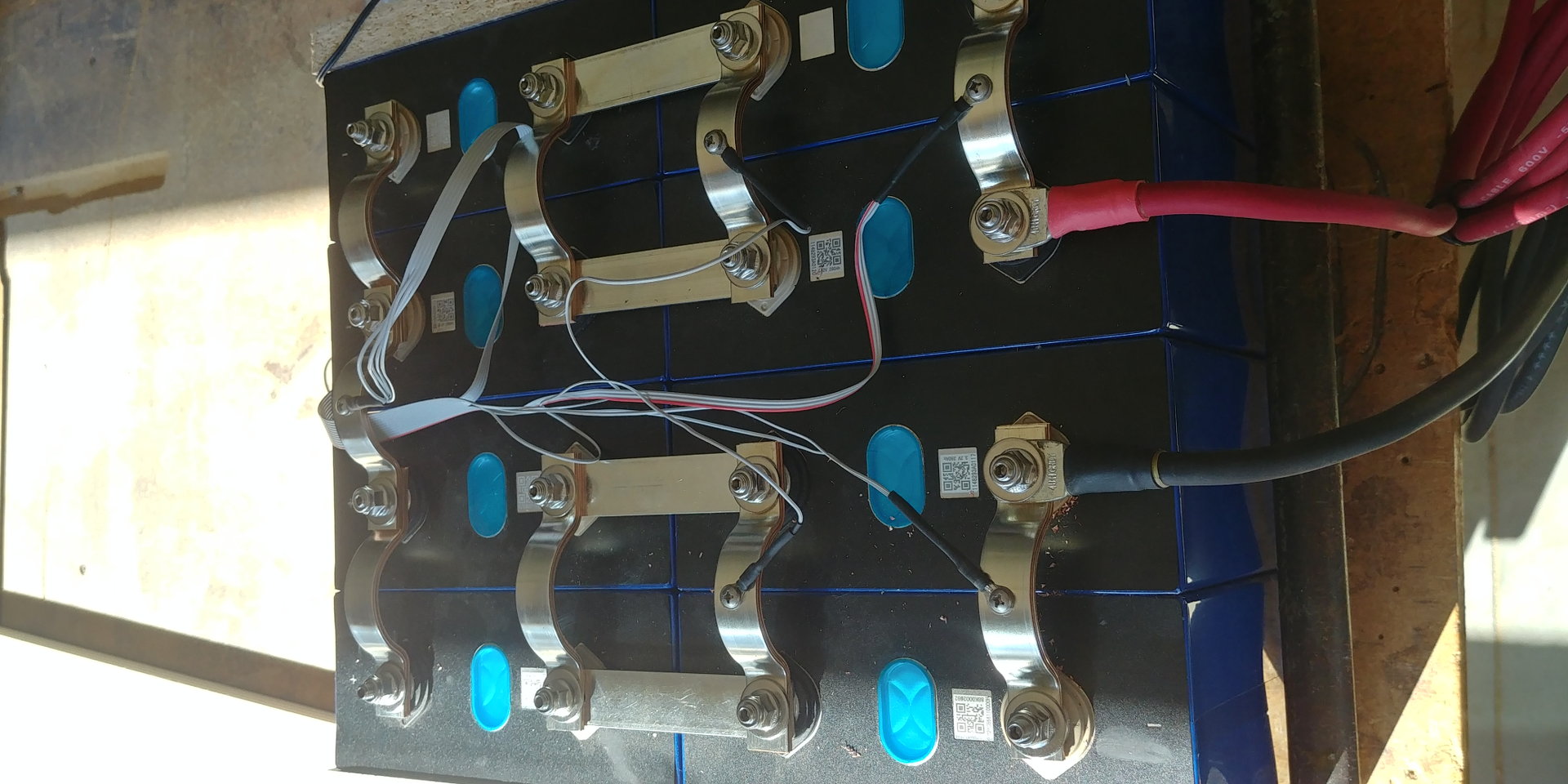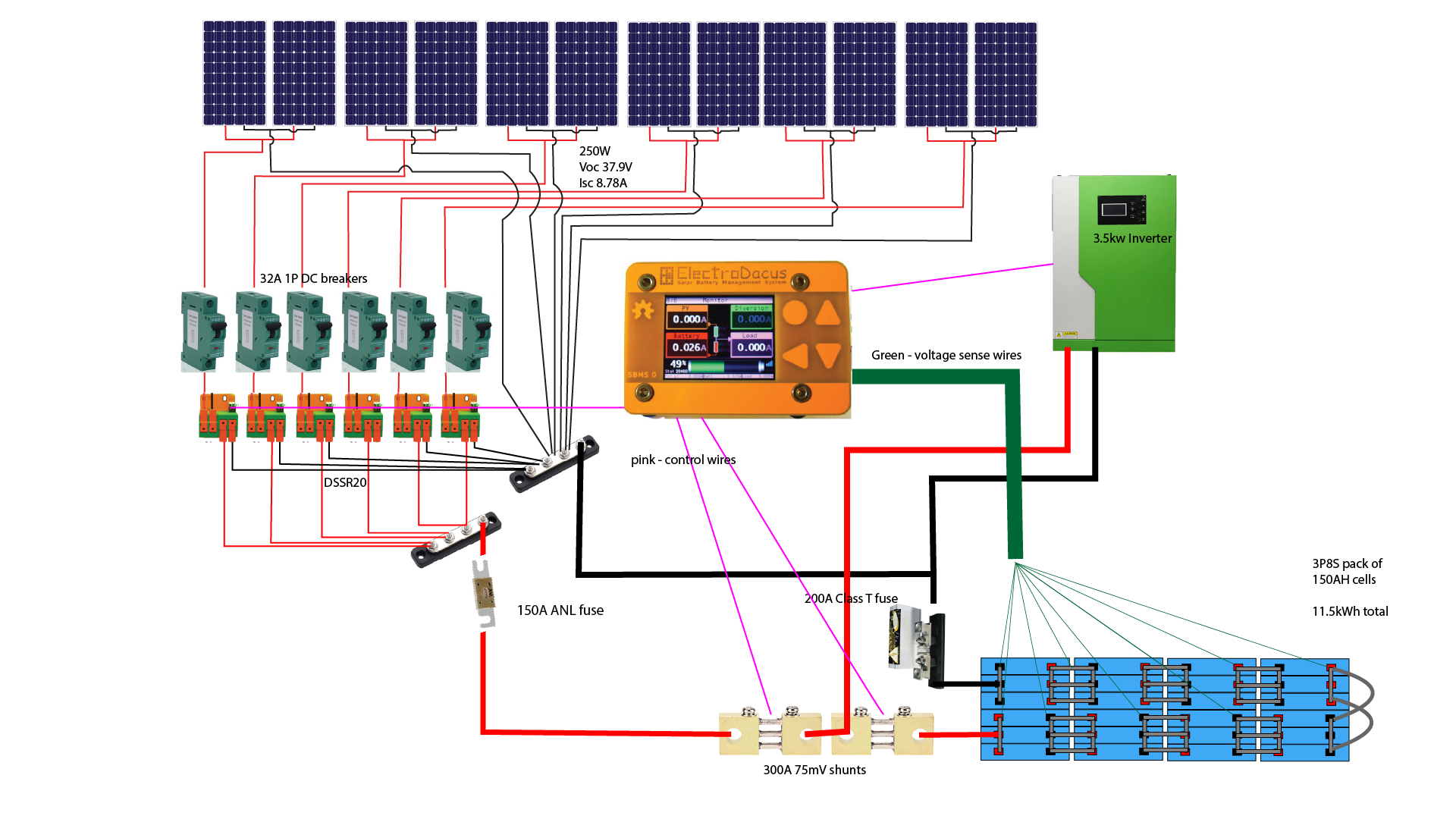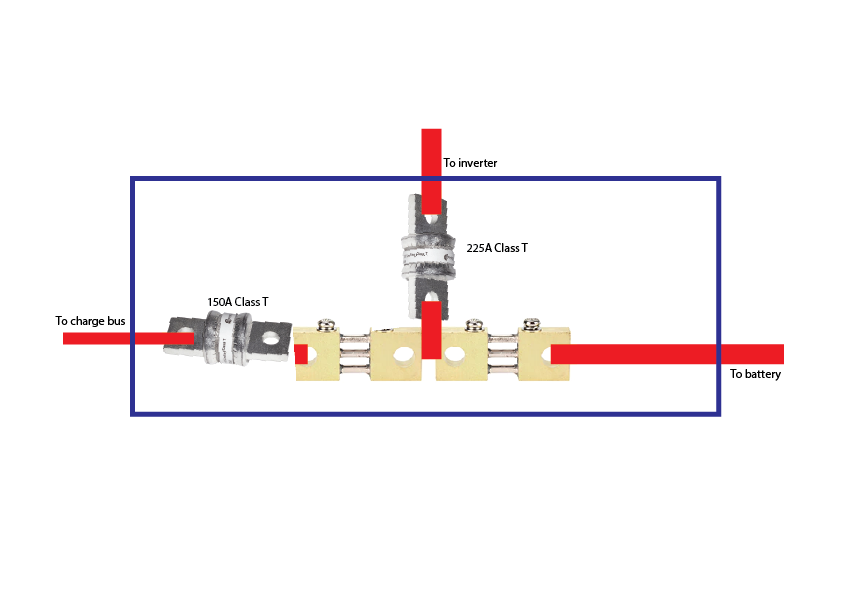Please check my plans
Leon Close
Plamen
Dacian Todea

Leon Close


Dacian Todea
Plamen
Petrus Potgieter
Leon Close
Dacian Todea
Leon Close


Plamen
Plamen
If wiring is done correctly meaning no fuse or switch between battery+ and current shunt then the current shunt can not fail.
Inside the current shunt amplifier there is a diode and that is the one that fails but energy when shunt is disconnected from battery is way to large thus the diode fails completely and you will need significantly large external diode and even then is not guaranteed it can protect the internal current shunt diode plus the leakage current a large diode has may have an influence in current measurement accuracy.
What happens is that if the shunt is disconnected from battery+ while current flows through it then the electromagnetic field around the wires that is stored energy will collapse and since shunt is still connected to the loads it will become negative in the sense that voltage will drop below battery- and since current shunt has an internal protection diode between the inputs and GND that is in turn connected to battery- the diode will start to clamp that negative voltage but if current was large that energy pulse from the stored energy will just completely damage the diode and with that the current shunt amplifier that contains it. If I were to put a larger diode internally then next weakest link will be damaged and that will be the cell balancing wires 1 and 2 that are connected to battery- and that in turn will likely damage much more on the SBMS0 including DC-DC converter, microcontroller and other parts.
The thing is that the simplest thing to do is just make a proper connection between Battery+ and current shunt and so as long as the current shunt is connected there this fault can not happen.
